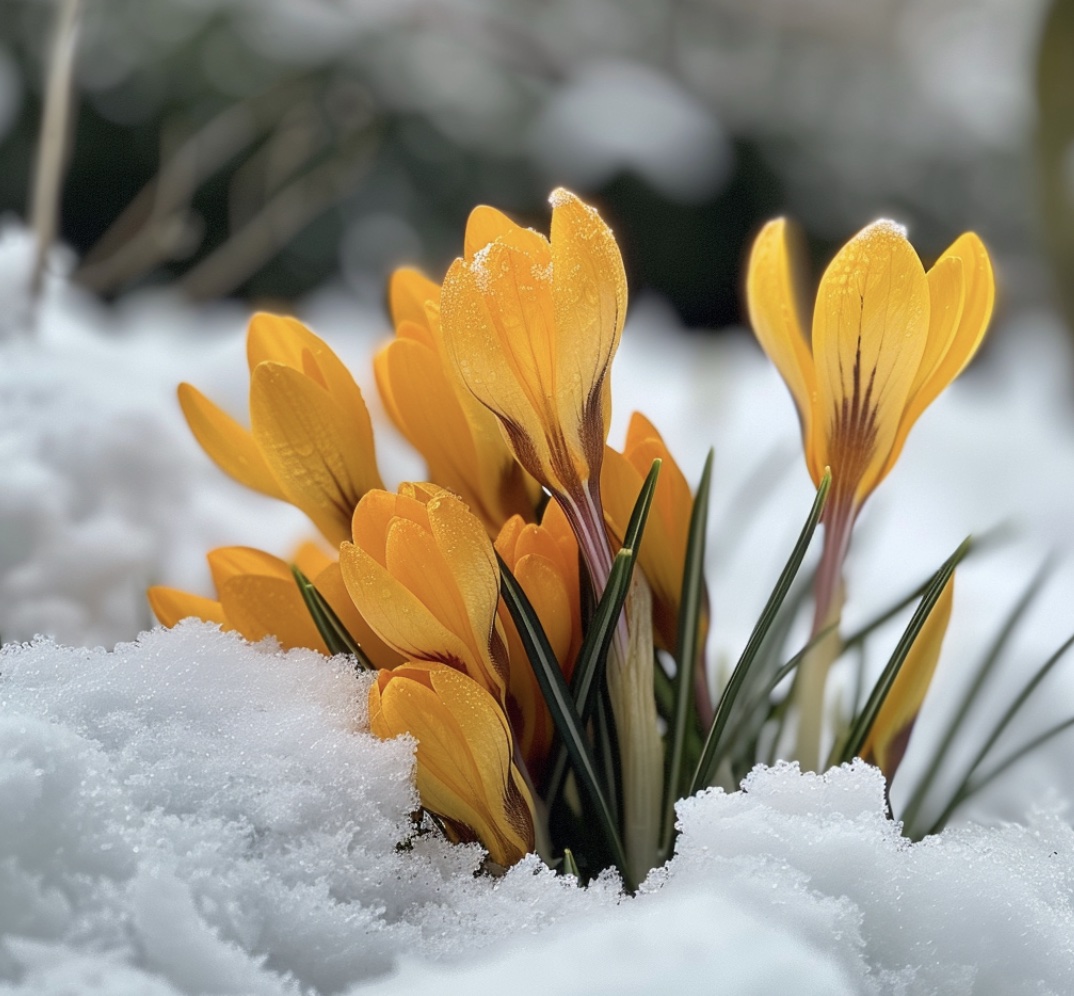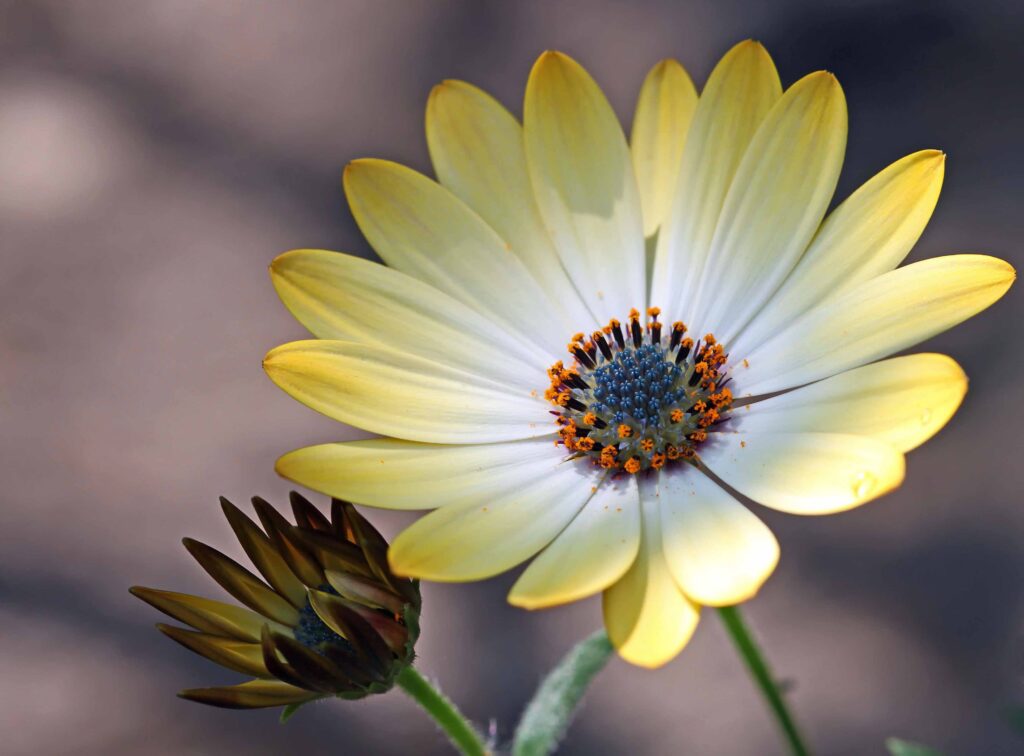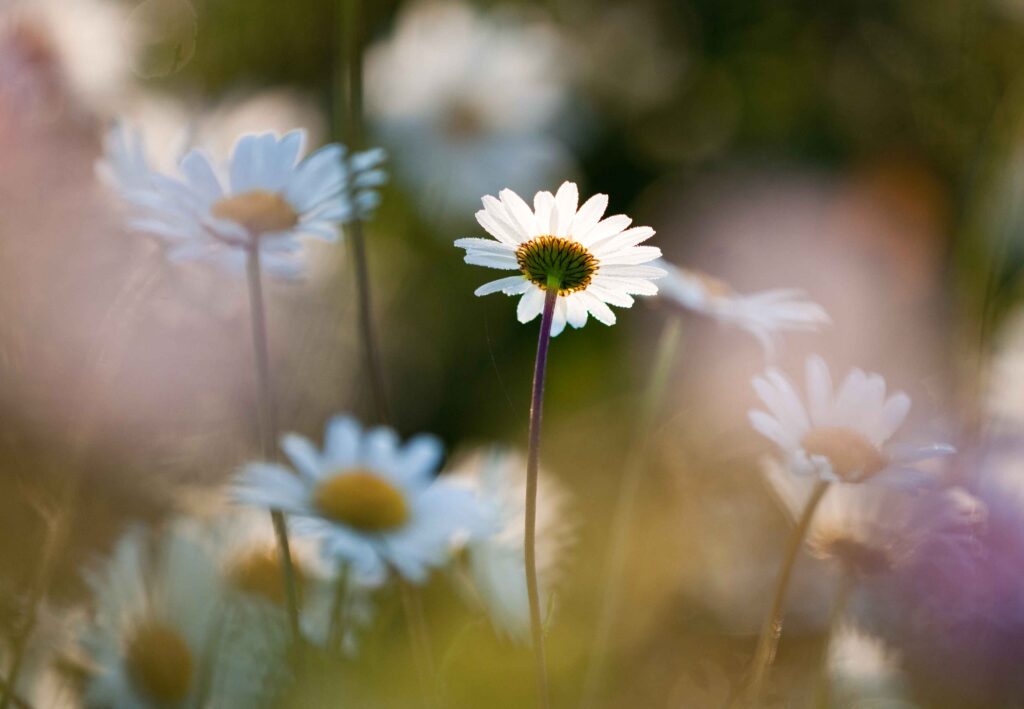
Having just had some very changeable weather here in the U.K. we were prompted to write this brief article about flower photography in different weather conditions. Flowers, with their vibrant colours and intricate details, are some of nature’s most captivating subjects. However, the weather can dramatically influence how they appear in photographs. Understanding how to adapt your techniques to various weather conditions can help you capture the best of flowers, regardless of the elements. In this guide will explore how to photograph flowers in different weather scenarios, offering hints and tips to make the most of each situation.
Sunny Weather - not that common in the north west of England!
Sunny weather can be a double-edged sword for photographers. On the one hand, the bright light can make flowers appear vivid and colourful. On the other hand, it can also create harsh shadows and overly bright highlights that may detract from the image’s quality. Harsh shadows in flower photography is definitely not ideal.

The golden hour, which occurs shortly after sunrise and just before sunset, is often the best time for photographing flowers. During these periods, the sunlight is softer and warmer, casting a golden hue that can enhance the colours of your floral subjects. This gentle light reduces harsh contrasts and highlights, making it easier to capture the delicate features of the flowers. Position your flowers so that the golden light illuminates them from an angle, creating a flattering glow that brings out their natural beauty.
Shooting in the midday sun presents its own set of challenges and is usually best avoided if possible. The intense light can lead to stark shadows and overly bright spots, which can overshadow the intricate details of the flowers. To counteract this, you can try a diffuser to soften the light. This tool scatters the light, reducing its intensity and creating a much more even illumination. Alternatively, seek out flowers in a shaded area or you can position yourself between the sun and the flower.
When photographing flowers in full sunlight, a wide aperture, such as f/2.8 to f/4, is often best. A wide aperture allows you to achieve a shallow depth of field, which blurs the background and makes the flowers stand out as the focal point of your image. Additionally, a faster shutter speed helps freeze motion, capturing sharp, detailed images of the flowers even if there’s a slight breeze.
Overcast Weather - common in the north of England.
Overcast weather provides a unique opportunity for capturing flowers with a soft, diffused light. The clouds act as a natural diffuser, scattering sunlight and creating an even illumination that reduces harsh shadows and highlights - this is a good thing. This type of light is particularly good for capturing the subtle textures and details of flowers, making it easier to photograph delicate features without the interference of strong contrasts.
With the soft, diffused light of an overcast day, a medium aperture, such as f/5.6 to f/8, works well. This setting allows for a greater depth of field, ensuring that more of the flower is in focus and highlighting the intricate details of the petals and leaves. Obviously, the aperture setting you choose depends on the overall effect you are after in your image. Since the light levels are lower than on a sunny day, you may need to increase your ISO slightly to maintain proper exposure.
Overcast weather can also be an excellent time to explore black and white photography. The even light enhances textures and contrasts without the distraction of colour, allowing you to focus on the form and structure of the flowers. Experimenting with monochromatic images can reveal new aspects of the flowers’ beauty that might not be as apparent in colour - give it a go!
Another advantage of overcast conditions is the reduced risk of glare and reflections, which can sometimes be problematic in direct sunlight. This allows for clearer, more detailed images of the flowers without the interference of unwanted light reflections. You can utilise the soft light to highlight the delicate veins in the petals or the subtle variations in colour.
Rainy Weather - now you're talking!
Rainy weather introduces a fresh and dynamic element to your flower photography. The rain creates a unique texture, adding water droplets that can enhance the visual interest of your images. These droplets can reflect light and create sparkling effects on the flowers, adding a magical quality to your photographs.
When photographing flowers in the rain, it is essential to protect your camera and lens from getting wet. A waterproof cover or plastic bag can shield your equipment from moisture and prevent potential damage. Despite the rain, the diffused light often found on rainy days can be similar to that of an overcast sky, providing a soft, even illumination that highlights the fine details of the flowers.

To capture sharp images in rainy conditions, you may need to use a faster shutter speed. The movement of raindrops and the potential for wind can lead to motion blur, so a faster shutter speed will help freeze the action and ensure that both the flowers and the droplets are captured clearly. Additionally, using a wide aperture, such as f/2.8 to f/4, allows you to focus on the flowers while blurring the background, making the flowers stand out even more against the rainy backdrop.
Rainy weather also creates reflective surfaces, such as puddles, which can be used creatively to add depth to your compositions. Look for reflections of the flowers in the water to enhance the visual interest of your images. These reflections can provide a unique perspective and create a more dynamic and engaging photograph.
Windy Conditions
Wind can add an element of movement to your flower photography, offering both challenges and opportunities. The swaying motion caused by the wind can lead to motion blur, making it essential to use a faster shutter speed to capture sharp images. Setting your shutter speed to around 1/500 second or faster can help freeze the motion of the flowers and ensure that they are depicted clearly, even if they are swaying in the breeze.
A smaller aperture, such as f/8 to f/11, can be beneficial in windy conditions. This setting increases the depth of field, ensuring that even slightly moving flowers remain in focus. Additionally, if possible, stabilising the flower—by gently holding it or using a plant stake—can help reduce unwanted movement and provide more control over your shots.
However, embracing the wind can also offer creative opportunities. Capturing the swaying motion of the flowers can add a dynamic and fluid quality to your images, portraying the flowers in their natural, undulating state. Experiment with different angles and compositions to highlight the movement and create a more engaging and lively photograph. Just having a go and experimenting can produced some unexpectedly beautiful images!
Frosty or Snowy Weather
Frost and snow transform the environment into a magical, crystalline landscape that can present unique opportunities for flower photography. The bright, reflective qualities of snow and frost can create a striking contrast with the vibrant colours of the flowers, making them stand out against the white backdrop. Depending on where in the world you live will obviously make a difference to which flowers will be in bloom at a time of year when you may also get snow. Here in the U.K. this tends to be in spring when snowdrops, crocuses and daffodils are in bloom.
In snowy conditions, a wide aperture, such as f/2.8 to f/4, helps to isolate the flowers from the bright, snowy background, creating a pleasing contrast that highlights the flowers’ colours and details. The reflective nature of snow and frost can enhance the colours of the flowers, making them appear even more vivid against the white landscape.
The contrast between the vibrant colours of the flowers and the white snow or frost creates striking visual effects that capture the essence of winter’s beauty. Look for compositions that emphasise this contrast and take advantage of the unique qualities of the snowy environment to create compelling and memorable images.

Conclusion
Photographing flowers in different weather conditions requires a thoughtful approach and an understanding of how each type of light and environment affects your images. By adapting your techniques to the specific conditions, you can capture the true essence of flowers, whether they are basking in the golden hour, illuminated by soft overcast light, or soaked with raindrops. Embracing these different conditions and using them to your advantage can elevate your floral photography and help you create stunning images that showcase the beauty of nature in all its forms.
By experimenting with different techniques and approaches, you can discover new ways to capture the unique beauty of flowers, regardless of the weather. Whether you’re photographing flowers under the bright sun, in the gentle rain, or amidst the snow, understanding how to work with the elements will enhance your ability to create breathtaking floral photographs. So what are you waiting for? Just get out there with your camera and have some fun!